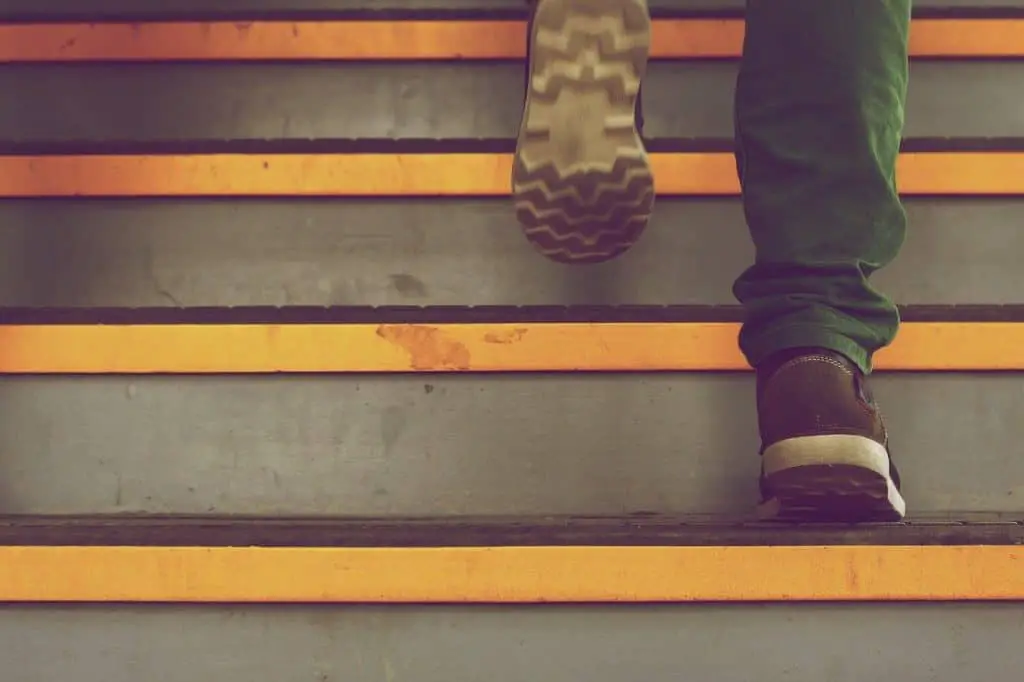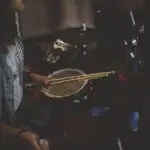
There’s nothing more embarrassing than walking into a very quiet room, only to have your shoe squeaking with every step you take – especially if you’ve arrived late to a serious event. You only have to experience this once – then, you’ll either fix that squeaky shoe, or throw it away and buy a new pair.
Having a squeaking shoe is just plain annoying. This usually happens with an old pair of shoes. (If it happened with a pair of new shoes, they may just need to be broken in. On the other hand, they could just be defective. You should check for squeaking when you try them on before buying.)
Fortunately, like any other problem, there are ways you can make the shoe stop squeaking. In this post, I will share with you some tips to fix this problem.
How to Stop a Squeaky Shoe from Squeaking?
There are dozens of things you can do to solve this problem. However, in this post, I will describe those that are actually proven to work.
So, without further ado, let’s start.
Step 1: Identify the Reason Your Shoe is Squeaking
This may sound silly, but sometimes the reason the shoe is squeaking is because it has water in it, after walking in the rain, for example. This problem should be obvious, but sometimes the shoe can be wet inside, and feel dry outside. Most of the time, you can tell right away.
If the shoe isn’t wet or damp, take a close look, to see if the outer sole (the bottom of the shoe) is starting to separate, or if the heel is starting to separate.
Sometimes, a shoe squeaks because the shoelaces are rubbing against the tongue of the shoe.
On occasion, inspecting the shoe won’t show you the source of the squeaking. In those cases, it’s likely due to friction between the parts of the shoe, moving around with each step. In that case, we need to get rid of the friction.
Let’s talk about solutions to the various problems that may be making your shoe squeak.
Step 2: Fix the specific cause of the squeaky noise
This may sound obvious, but if the squeaking is caused by too much moisture in the shoe, you need to dry it out. Here are some tips for drying out your shoes.
If the problem is moisture, just dry them out – naturally.
I’ve read advice to put the shoes in your clothes dryer, along with a dryer sheet, but I would only do that with a pair of tennis shoes or shoes made from other man-made materials. I personally wouldn’t put a nice pair of leather shoes in the dryer. You’re much better off letting them dry normally, by sticking some balled-up paper towels in them (or even newspaper), and letting them air dry. If you have a desk fan or box fan, set it on low, and aim it at your shoes.
Apply baby powder to the insole of the shoe.
Sprinkling baby powder or talcum powder can fix the moisture problem, and can fix the problem of friction between the insole and the midsole. This is the best solution especially if the insoles are not stable inside. If the insoles are moving a lot when the shoes are on your feet, they produce a squeaking noise. The very purpose of the baby powder is to lessen the friction between the insoles and the other parts of the shoes. Without friction, shoes should stop squeaking.
To do it correctly, pull the insoles out, so that you will be able to sprinkle the baby powder between the insole and the midsole (the part you see once you’ve pulled the insole out). If the insole can’t be removed, just sprinkle the baby powder on top of the insole, and work it around the edges, so it can get into any gaps, and into the perforations in the insole itself.
Make sure that the powder is evenly spread, and not too heavy – you don’t want powder puffing out when you walk. After this step, you can then put the insoles back inside the shoe.
If you don’t have baby powder, you can use cornstarch instead.
This video demonstrates how to apply baby powder in the squeaky shoes.
If the squeaky noise is caused by the shoe insole moving around, reduce the friction
Put a paper towel underneath the insoles, to reduce friction
Aside from applying baby powder, you could use a paper towel (or even a kitchen towel) to reduce friction. Depending on the required thickness, you can fold the paper towel and insert it underneath the insoles.
The kitchen towel or paper towel will help hold the insoles in place so that they will not move around. When that happens, you’ll hear no more squeaking when you’re wearing the shoes.
There are many alternative materials you can use. In fact, in emergency situations, you can use napkins. Follow the same strategy and you’re good to go.
The only drawback of this technique is that the paper towel, or whatever paper you used, is not durable enough to last long. In most cases, you need to change the paper underneath the insole before wearing your shoes again.
Apply some saddle soap or coconut oil to stop a shoe from squeaking.
Another potential cause of squeaky shoes is that the leather can become too dry. To keep the uppers of leather shoes from drying out and squeaking, you should periodically treat the shoes with saddle soap or very small amounts of plant-based oils, to condition the leather, and to keep it in shape. You can use saddle soap (which has been recommended and used for many years), or a plant-based oil, like coconut oil. Just be sure you test the oil on a small spot first, to make sure it doesn’t discolor the leather. In addition to keeping the leather soft and flexible, coconut oils or other plant-based oil can lessen the friction between the shoe components, which can also decrease the shoe squeaking.
If you’re using oil, you don’t need to flood the insoles with oil. Just remove the insole, and apply a little amount of oil to lubricate the insoles. A few drops is all you need. You don’t want extra oil lying in the bottom of your shoe, soaking your socks. Spread the oil around a little with your finger, so it evenly covers the shoe bottom. After this simple process, you can reinsert the insoles into your shoes.
Treating a pair of shoes with saddle soap, leather conditioner, or oil is far easier and lasts longer than using paper towels. This is because it takes time for the oil to be completely absorbed and the shoe dry out. Oil doesn’t evaporate – it just works into the shoe (like you want it to), and small amounts of the oil can be absorbed by your socks. So, just use a little bit, and reapply the oil as needed.
When a squeaky noise is caused by the surfaces you’re walking on
Insoles are not the only source of the squeaking sound. Sometimes, the slick bottom of the shoes (called the “outsole”) is the source of the disturbing sound, especially on hard floor surfaces, like hardwood, tile or vinyl flooring.
If this is your case, you can apply the following strategies:
- Use dryer sheets and rub them on the bottoms of the shoes. As mentioned, when the squeaking sound comes from the bottom of the shoes, that means that the bottoms are too slick. This makes the shoes squeak every time you step on a hardwood floor or other smooth surface.
2. Use sandpaper to rough up the bottom of the shoes. Aside from dryer sheets, you can use sandpaper to make the bottom of the shoes rougher. Doing this makes the bottom the shoes less smooth. And most importantly, this will make the shoes stop squeaking.
You can use any type of sandpaper. But what I found most effective is sandpaper with 120-220 grit. It will not damage the bottom of the shoes. As with the other solutions, try it lightly at first, and increase it only when the squeaking persists.
3. Rub a bar of soap on the sole. This is a great solution if you have a rubber shoe that is squeaking especially when you’re walking on a hardwood floor. If you want to do apply this technique, I recommend that you use cheap soap. I don’t exactly know why but cheaper soaps do a very good job at stopping a shoe from squeaking.
You might be thinking that soaps can only make the shoe slippery. But based on my experience, it does not. In fact, soaps can improve traction.
4. Apply Candle Wax (Beeswax). You might not have heard of this technique yet, but this is an effective way to make your shoe stop squeaking. Aside from the methods I shared above, you can also use candle wax to stop a shoe from squeaking.
This technique is similar to applying oil. Beeswax is a material that lessens friction between the various components of the shoes. It makes the surface of the shoe smooth and therefore prevents rubbing between the parts that create the squeaking sound.
Sometimes, a squeaky shoe is the result of a buckle on the shoe rubbing against the leather. Applying a small amount of beeswax to the buckle will remove the friction, and the squeak.
5. Apply rubber cement. Sometimes, the shoes squeak because of the rubber heel rubbing against a hard floor surface. Applying a thin layer of rubber cement can eliminate that problem. As with the glue solutions mentioned above, be sure to set the pair of shoes on a newspaper or other disposable material before applying the rubber cement, to protect your countertop. And, make sure the cement is completely dry before wearing the shoes.
When loose parts are causing the shoe squeak
Often, the heel of a shoe will loosen, and sometimes leave a gap between it and the outsole (the very bottom of the shoe). If left loose, the squeaking will be the least of your problems, as the heel will probably just come apart at some time – and possibly at the worst possible time. It’s pretty easy to tell if the heel is coming loose – it you wiggle the heel while holding the shoe you can usually see the heel move.
In a similar way, the outsole itself can begin to separate from the shoe’s upper, which can also cause a squeak, and eventually the sole will come off. (It’s also very likely to catch on something as you’re walking, causing an embarrassing and potentially dangerous trip.)
Use glue to fix the heel, or other loose parts of the shoe
If your shoe is squeaking and the heel or outsole (the very bottom of the shoe) is loose, the gaps between the parts of the shoe create the squeaking sound.
The quickest way to get rid of the problem is to use glue to attach everything to their respective places.
For shoe repairs, always use Shoe Goo or a good contact cement for a strong and flexible bond. Never use super glue or gorilla glue, because it dries hard, and will not flex after it has set. Shoes need to be able to flex and bend with your feet and movement. Also, super glue will ruin leather, so beware.
Shoe Goo is an excellent adhesive (and sealant) for repairing and rebuilding shoes. It works on leather, rubber, vinyl, and canvas. You can use it to reattach a separating heel or sole, and to fill in gaps and holes in leather shoes (and rubber), just like adhesive putty.
Just place your shoe on a newspaper or other disposable material, so the glue doesn’t leak onto your work area, and apply the glue. You’ll want to either clamp the parts in place, or stand the shoe up and place something heavy inside the shoe, to keep the parts in solid contact. Leave the shoe to dry as long as the glue instructions indicate.
The other effective technique you can try in terms of attaching the parts of the shoes firmly is letting the glue partially dry before clamping the parts together. The partially hardened glue will be stickier than the wet one.
But either way will work so you don’t have to worry about it. Just decide which one appeals to you.
Don’t wear the shoe immediately after fixing it. In my case, I just put it aside for about 48 hours to make sure that the glue has rigidly held all the parts in place.
A few more tips on repairing shoes
If you don’t already have one, we recommend investing in a quality shoe repair kit to keep your footwear in tip-top condition between trips to the cobbler.
If you just can’t seem to get your shows to stop squeaking, and they’re a high-quality pair of shoes you want to keep, you may need to take them to a cobbler or shoe repair shop. They can possibly get to the bottom of whatever structural problem is causing the squeak. A reputable shop can take a quick look at the shoe and tell you if they can fix it, and give you an estimated price, or if it’s not worth the trouble. There’s no charge for them taking a look. And it’s cheaper than springing for another pair of new shoes.
Final Thoughts on How to Stop a Shoe from Squeaking
Wearing a squeaking shoe is both annoying and embarrassing to some extent – especially at a formal affair. The good news is that there are easy solutions to this problem available.
The techniques that I have shared in this post are mostly based on my personal experience in fixing a squeaking shoe. If you use some of these strategies, you can fix your problem too.
Every shoe problem may be unique though. That said, I don’t guarantee a hundred percent success. Your shoes might be different from what I had before. But don’t be afraid to experiment.
Nonetheless, I hope that this simple guide will somehow help you fix your shoes. If you want to learn more information like this, feel free to visit my Soundproofing Guide.




